Zambia has great natural beauty, unusual species, exhilarating activities, and a rich cultural legacy. From the roaring Victoria Falls to species brimming national parks, Zambia natural wonders provide amazing locations for travel.
If you pay a visit to Zambia, you will see some of the most wild and remote areas in South Africa. However, while most of its reserves are pretty remote, Lusaka, Zambia’s capital, enjoys quite good transport links.
The best places to visit in Zambia and the Zambia natural wonders will be highlighted in this post.
List Of Zambia Natural Wonders
1. Victoria Falls
Unquestionably one of Zambia’s most popular attractions, Victoria Falls is among the biggest waterfalls in the world and really one of the natural marvels of the planet. Perched on the powerful Zambezi River, the falls drop more than three hundred feet into the Batoka Gorge. The falls go under the local name “Mosi-oa-Tunya,” meaning “the smoke that thunders.”
Among the main reasons people travel to Zambia is go for safaris is Victoria Falls trips. Half of the biggest waterfall in the continent resides in Southern Africa, and thousands of tourists from all around the world swarm there yearly to personally experience this natural beauty.
Travelling to Southern Africa, the Zambian side of the Falls is fast becoming a favourite spot with lots to offer. One of its many excellent features is that visitors are spoiled for choice with several luxurious hotels and lodges constructed directly on the banks of the Zambezi River, just upstream from the falls.
Two incredible experiences are also particular to Victoria Falls on Zambia’s side. During high-water season, the first is an exciting (and drenching!) trip along the paved walkways on the edge of the waterfall to cross the heart-racing Knife-Edge Bridge. About 100 metres (328 feet) above the canyon.
And the second is a guided excursion to Devil’s Pool, a naturally occurring rock pool beside the waterfall. If you are feeling bold, jump in for a dip and swim across to the Devil’s Armchair, a low rocky ledge that shields you from toppling over the edge) and enjoy the amazing surroundings; don’t worry, it is quite safe!

2. South Luangwa National Park
Compared to the usual wildlife drives, while they offer more original experiences, walking safaris employ different perspectives. More to the point, they rouse your sensorial perceptions and set you running wild into the African wilderness just as you were born to be before you started travelling by car.
In other words, these are trips where you can feel part of the surrounding landscape rather than an outside observer as you can move near enough to see wild animals and ecosystems at your convenience.
And where would one better savour this remarkable journey than at South Luangwa, the base of the walking safari? South Luangwa National Park, the top wildlife destination in Zambia, is untamed, far-off and bursting with a range of large animals.
This real, off-the-beaten-track safari lets you stroll across big-game territory on foot under direction. From a morning walk to a multi-day hike, a walking safari in South Luangwa may be anything. Spending starlit evenings at isolated lodges or tented camps.
Although walking safaris originated in Zambia’s South Luangwa National Park, its other outstanding parks and reserves are not to be undervalued. This hidden treasure quality is precisely why experienced safari visitors (especially those seeking a more genuine wildlife experience with fewer visitors) have traditionally favoured these parks.
You might be surprised, though, to find Zambia also a great destination for first-timers on safaris. For what purpose? Game drives, night drives, walking and canoeing safaris abound in the parks of the Luangwa and Zambezi Valleys; all of this is centred on the whirling mist and thundering water of the great Victoria Falls.
To see animals up-close, you can arrange open-vehicle safaris, walking safaris, evening safaris, multi-day excursions into the bush. Certainly one of the best locations to see Zambia’s unique species is South Luangwa.
South Luangwa National Park is among the greatest locations for Zambia adventure activities and safari visitors. The park safeguards an amazing ecology anchored on the Luangwa River.
Large concentrations of elephants, hippos, antelope, lions, leopards, and over 400 kinds of birds abound in South Luangwa.
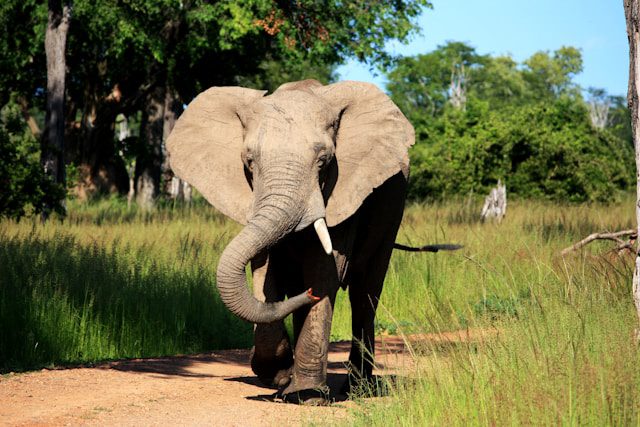
3. Liuwa Plain National Park
Contrary to numerous African safari locations that are jam-packed, Liuwa Plain National Park, which is off the beaten track, offers guests a chance to enjoy genuine nature and peace. Tremendous numbers of wildebeest, zebra, antelope, hyenas, plus Liuwa’s far-away grasslands and forests play host to over 300 bird species.
Thousands of people visits the park as Liuwa provides a front-row access during November to December of second largest wildebeest migration in Africa. Liuwa offers a distinctive Zambian safari with broad open views and few visitors.
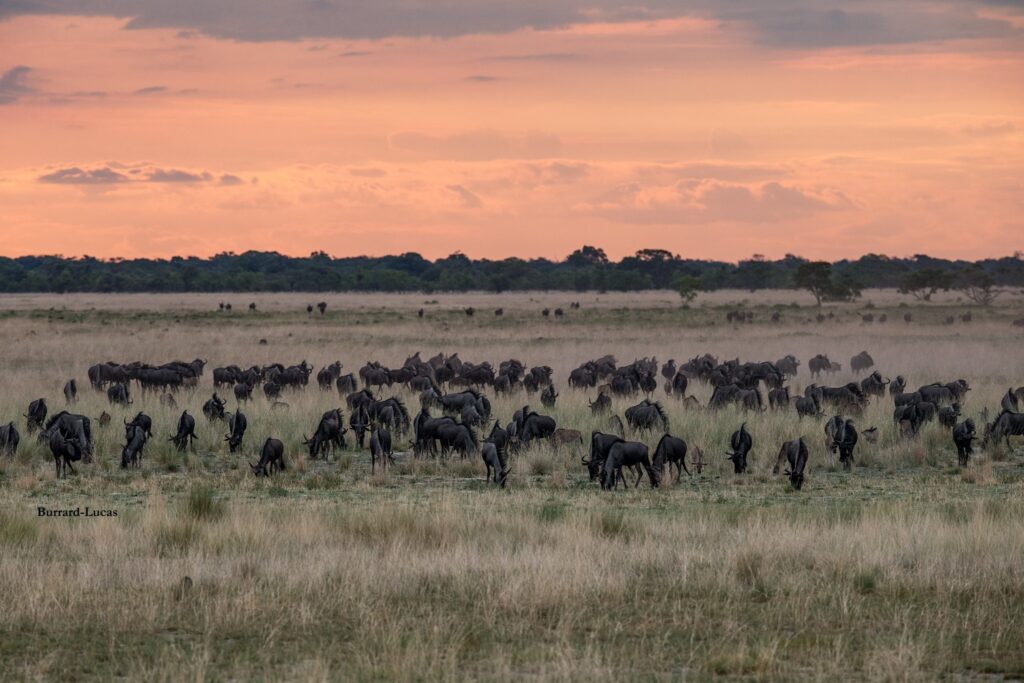
4. Mosi-oa-Tunya National Park
The Mosi-oa-Tunya National Park protects the immediate vicinity of the Victoria Falls just outside Livingstone. In this magnificent region, one may see not only the impressive waterfall but also white rhinos, giraffes, zebras, elephants, as well as various antelope species including impalas and wildebeests among others.
For animal viewing purposes, people should take a leisurely walk along picturesque tracks that traverse savannahs as well as pass through forests when present. In a small space, Mosi-oa-Tunya provides simple access to view both the falls and related species.
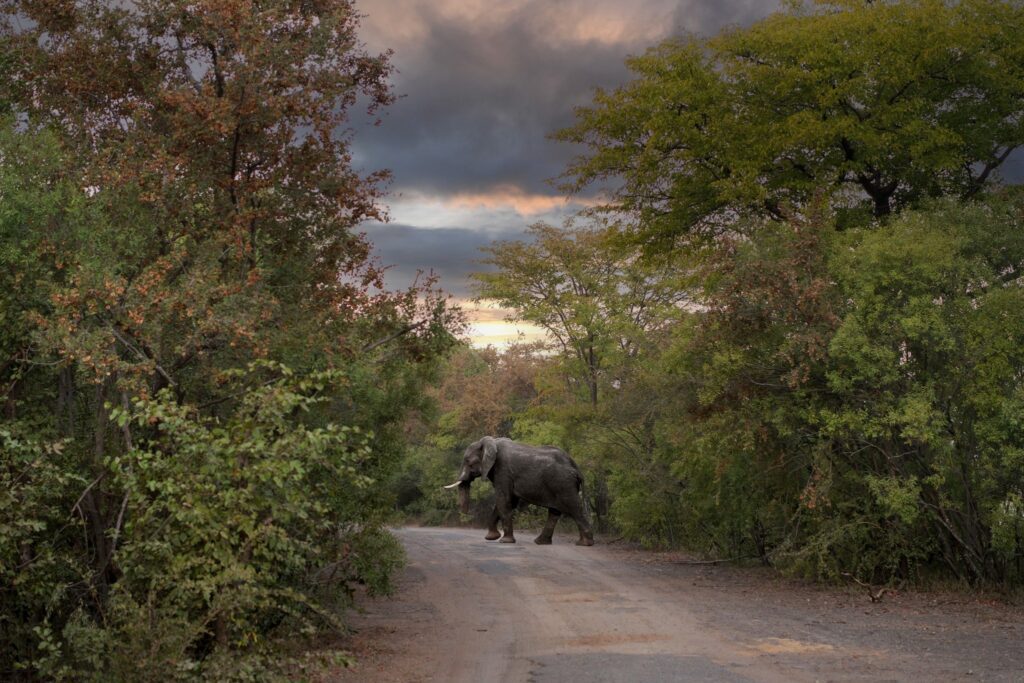
5. The Zambezi River
Seeing the great Zambezi River in all its glory is one of the main attractions of visiting Zambia. For those who prefer water-based sports, a Zambezi River offers a little piece of heaven between Zambia and Zimbabwe and upstream from Victoria Falls.
On one side the park is surrounded by green banks and elephant-filled islands of the great Zambezi; on the other side a steep and heavily forested escarpment.
The lifeline of Zambia, the Zambezi River provides thrilling experiences. Whitewater rafting downstream Victoria Falls over exciting Grade 5 rapids is one of the best ways to see the river. More laid-back sunset trips allow you to see wildlife and disconnect from the world.
Another excellent approach to really see the river system and related species is multi-day canoe excursions down the Lower Zambezi. The Zambezi brings together the beauties of all Zambia.
Staying at one of the several remote lodges and campers scattered along the river allows you to engage in a range of pursuits. Among adrenaline addicts seeking the Zambezi’s rapids, white water rafting is a preferred activity.
From Zambia into Angola and then back into Zambia, the Zambezi River is the fourth-longest river in Africa sweeping its path over the borders of Namibia, Botswana. Falling over Victoria Falls, it returns to Zambia before crossing into Zimbabwe. To finish its trip into the Indian Ocean, the river passes throughout Mozambique.
By damming the Zambezi River near Zambia’s border with Zimbabwe, Lake Kariba—the biggest man-made lake in the world based on volume—was created. Working together, the Kariba Dam and the Zambezi River generate electricity for Zimbabwe and Zambia
Game drives, boat safaris get you near the more aquatic life such hippos, Nile crocodiles, and even elephants which stray into the lake to cool off. For those wishing to mark the sought-after tiger fish or Upper Zambezi yellowfish from their Zambia travel bucket list, catch-and-release fishing trips are available.
The guided canoe trip down the Zambezi is a fantastic way to be close to animals and fully understand the importance of big game as experienced by keen paddlers. The best way to end your day on the Zambezi is by going on a sunset boat cruise which takes you on a silent journey along the river while having delicious sundowner cocktails.
Some major highlights includes:
- Hidden, opulent hotels and campgrounds on the Zambezi River
- Catch-and-release fishing covering more than seventy-five fish species
- Water-based safaris conducted in boats and canoes
- Exciting possibilities for white water rafting
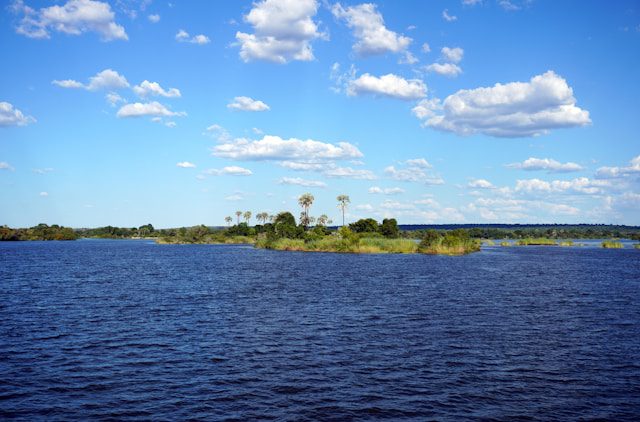
6. Le Valley De La Leopard
Without needing to be inside a guarded area, Zambia is one of the few African nations that can almost guarantee the complete pantheon of their species.
Elephants, hippos, giraffes, buffaloes, hyenas, and even lions frequent many cities, villages, hotels, and camps even outside of Zambia’s national parks; all of Zambia’s national parks and almost all of its lodging are unfenced.
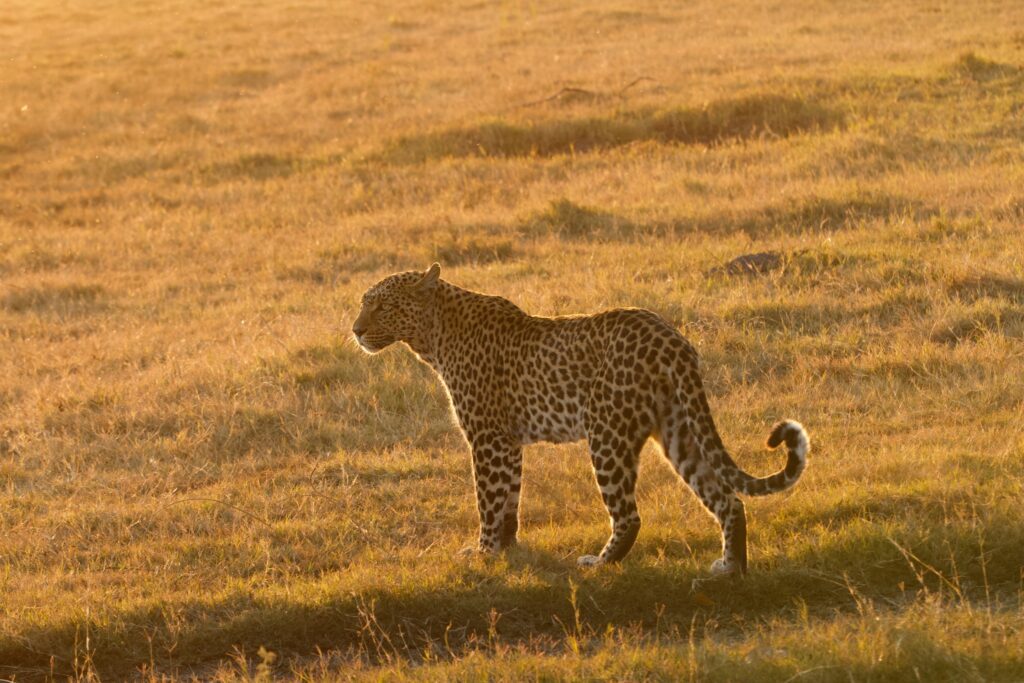
7. Lake Kariba
The largest man-made lake in Africa, the popular Lake Kariba is a real inland ocean. Although visitors might be forgiven for believing they are in Mediterranean Europe at times here, it is clear they are in Africa after the sun sets.
Apart from the magnificent African sunsets, Lake Kariba’s daily schedule usually consists in sunbathing, watersports, fishing, fresh crayfish, ice-cold sundowners and general leisure.

8. Kafue National Park
Covering more than 22,000 square kilometres in western Zambia than 9,000 for South Luangwa, Kafue is among the biggest national parks on the whole African continent. With kilometre after kilometre of unspoiled wilderness still intact, travellers mostly ignore this scale.
Though one of Zambia’s three main national parks, Kafue National Park is among the biggest in Africa and least frequented. With just a few luxury tented camps, Kafue is still quite, quite wild off the usual route.
One of Zambia’s most important wetland resources and the best area of the park for wildlife watching, the Busanga Plains are located in the extreme north of Kafue Large numbers of red lechwe, puku and majestic roan antelope graze on grassy floodplains, drawing lots of predators like packs of wild dogs, lion prides and lone cheetah.
Apart from game drives, you may spend your days in Kafue on boat rides and walking safaris, go fishing on either the Kafue or Lunga River, and twitchers are likely to add a few ticks to their lists with over 490 species of birds reported.
Kafue National Park offers Zambia a real wilderness experience among the largest national parks in Africa. Lions, leopards, cheetahs, elephants, hippos, zebras and more than 400 kinds of birds abound in the mostly undeveloped northern half of the huge park.
See the varied species via safari on the Kafue River by boat or car. Kafue is particularly well-known for its vast red lechwe antelope herds around the Busanga Plains. One of Zambia’s most famous landscapes, the park protects a large area of pure miombo woodland.
Although it is so vast, wildlife can be more difficult to find; still, the park boasts one of Zambia’s only active cheetah populations, a sizable leopard count, and uncommon antelope species.
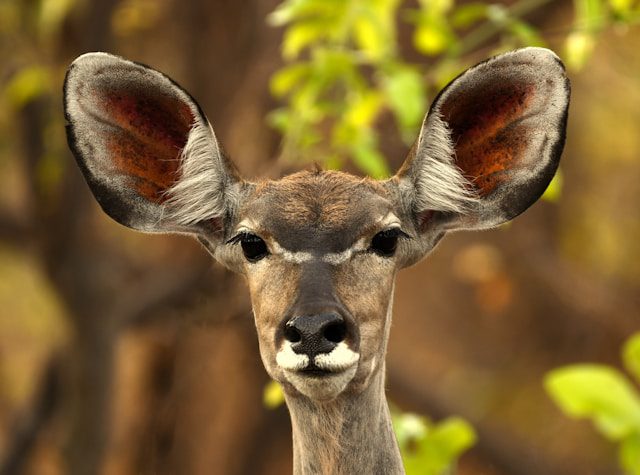
9. The Lower Zambezi National Park
Lower Zambezi National Park next to the Zambezi River is another amazing national park for safaris and wildlife. The many habitats of floodplains, forests, hills and valleys let amazing variety of animals possible. Search for elephants, buffalo, hippos, crocodiles, and hunters like leopards and lions.
One of Zambia’s top ecological attractions, the Lower Zambezi National Park is among the pristine wilderness areas unspoiled by poachers, conflict, or other issues vying against nature.
There are no paved roads in the Lower Zambezi National area; even entrance to the area is difficult by vehicle. Viewers of wildlife can find elephant, lion, leopard, buffalo, crocodile, hippos, and other antelope. Comprising 1,580 square miles (4,092 sq. km), the park offers Zambia a real wilderness wonder.
The park features world-class tiger fishing, canoeing safaris, walking safaris, boat cruises and first-rate bird viewing possibilities. Unlike some other safari sites in Zambia, Lower Zambezi is more isolated and less packed.
Recently ranked as the first carbon neutral park worldwide, the Lower Zambezi National Park totally offsets the greenhouse gas emissions produced by tourism operations. Apart from mammal observations of lion, buffalo, hippo, and monkeys, the park presents outstanding birds.
The park is ideal for individuals who would like have a far more sedate national park experience. Since the park is still very unvisited, it is not unusual to find no other guests sleeping there. Lower Zambezi is only roughly three-hour’s drive from Lusaka.
Canoe safari viewing an elephant at Zambian Baines River Camp
Stretching out along the glittering waters of the vast, blue Zambezi River, the Lower Zambezi is a really lovely reserve. There is also lots of big game here, and the lodges usually have more flexible schedules by arranging a day of activities to fit your interests: game drives, nature walks or, a major highlight – canoe safaris.
Consider a canoe safari as more than just hard work: you drift more than paddle, floating by the twitching ears and snorts of submerged hippos and knobbly Nile crocodiles lounging on the riverbanks. It is definitely exciting and serene. The guides are absolutely in tune with the routines and behaviour of the animals and feel quite free to project their future actions.
A canoe allows you a closer and more personal view of animals like buffalo and elephant, who ignore your gentle passing by them quite undisturbed by your presence as they drink their fill at the margin of the river.

10. Tanganyika
Second deepest lake in the world is Lake Tanganyika in northern Zambia. It is the ideal location for snorkel and scuba diving with more than 350 different fish species and pristine seas. Apart from aquatic life, divers also find a World War I wreck near the southern edge of the lake.
Comparatively small, ranging in width from 10 to 45 miles (16 to 72 km), it spans roughly 12,700 square miles (32,900 square km). It stretches mostly from the southern end of the Western Rift Valley, and most of its length the ground rises sharply from its coasts.
Situated on the line separating the floral areas of eastern and western Africa, Lake Tanganyika boasts oil palms, a feature of western African flora, along its coast. Along the coast, rice and subsistence crops are raised; fishing is also important. There are plenty of hippopotamuses and crocodiles, and the birdlife is extensive.
Many of the many people living on the eastern sides of the lake—mostly Bantu-speaking—have roots in regions of the Congo River basin. First seen by Europeans in 1858, the lake’s eastern side was explored by British explorers Sir Richard Burton and John Hanning Speke searching for the Nile River’s source.
Later Sir Henry Morton Stanley “found” David Livingstone at Ujiji in 1871. Important ports along Lake Tanganyika are Mpulungu in Zambia, Ujiji and Kigoma in Tanzania, Bujumbura, the capital of Burundi, and Kalemi in the DRC.
More than 10 million people live in the basin; the population density there ranges from 13 to 250 inhabitants per km2.Over 10 million people live in the basin, and its population density ranges from 13 to 250 inhabitants per km2.
Here sport fishing is rather popular and catches include Nile perch and the giant tigerfish. Except around Mpulungu, much of the shoreline is occupied by crocodiles, most likely in response to the noise of motorboats and people. An absolute delight is swimming in the lake (in the Mpulungu area only!).
Usually without any apparent cause, warm, clean, salt-free water that shifts from smooth stillness to powerful waves for a wonderful body surf. Storms from well up north most likely stir the quiet waters in the south.

11. Lusaka
Though seldom a tourist attraction, the capital of Zambia is worth a stop-over for visitors. With tarmac roads and a few big high-rise buildings a sign of growth that has pulled thousands of Zambians out of abject poverty in recent years, this city is on the ascent.
Highlights for tourists are the energetic Sunday Craft Market. And just beyond the city sits Lusaka National Park, Zambia’s most recent reserve.

12. The Kasanka National Park
Though elephants and leopards are known to live on this little 390-square-kilometer reserve, you do not visit Kasanka for lions and rhinoceros.
The bats in this largely marshy, forested park are the true attractions. Millions strong, enormous colonies of fruit bats may be observed emerging from their roosts to feed every evening and returning at daylight to rest. Watching them fly in the last of the light is unforgettable.
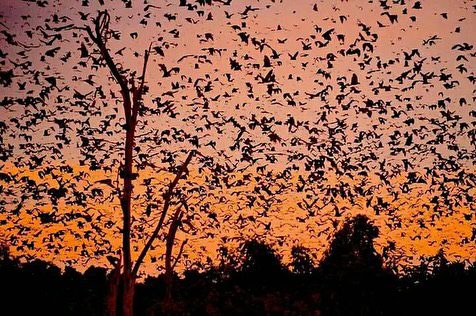
13. Blue Lagoon National Park
Blue Lagoon National Park is 100 km from Lusaka but worth the journey if you can arrange it into your schedule. Ideally seen in the wet season, this seasonal floodplain consists of a sequence of lagoons and lakes. Particularly for bird-watchers, this is a fantastic area for seeing wildlife. And it boasts a strong population of Kafue Lechwe, an antelope native to this section of Zambia.
This Park is a one of Zambia hidden gems. The great plains are breathtaking in the dry season and change entirely from a parched grass flatland to a watery paradise in the wet season as the flats fill with water and the migratory birds arrive from great distances.
This park was closed to the public until lately since the Defence Ministry considered it to be under reserve. Originally founded more than forty years ago by former British Army colonel Critchley and his wife Erica, an environmentally conscious farming family who subsequently sold it to the National Parks Department, Their farmhouse, today the Park reception, still stands. Two new and two old cabins for lodging are just a little further on.
Just 120kms west of Lusaka, Blue Lagoon on the Kafue Flats draws thousands of Kafue lechwe, zebra, sitatunga, few buffalo, and many waterbirds. Acacia woodland runs around the plains. One dream of birdwatchers is this park.
One of those remaining unspoiled locations left in Africa; the abundance and diversity are amazing; the fact that it has not been opened until lately and is still underdeveloped makes it much more special.
Together with the Lochinvar National Park on the other side of the Kafue Flats, this park boasts the highest concentrations of the Kafue Lechwe with herds counting in the hundreds. Among antelope, the Lechwe is the most aquatic. It enjoys these seasonal flooding grasslands and floodplains.
It usually feeds in shallow water and will sink under attack. While lechwe migrate in herds of roughly thirty, several thousand may congregate on the floodplains.
Huge river pythons drawn by the concentration of the lechwe and birds are an odd site on the plains. With its large flat lansdcape and amazing birdwatching, this Park offers a clear contrast to the others in Zambia, a great addition to any trip to that country.
Though Blue Lagoon is not a traditional wildlife site, the Wet season brings amazing birdlife. This is also the time the native Kafue lechwe gathers in the swampy floodplains. The observation platform provides a bird’s eye perspective of these marsh-loving antelopes splashing in the wetlands at dawn or evening. Also look for sitatunga; less flashy than the lechwe, this cautious, water-loving antelope can occasionally be seen slinking across the reeds.
One should visit Blue Lagoon during the Wet season, from November till April. The 5km/3mi causeway will reach well onto the sea at this time, and from this vantage point the lechwe is breathtakingly visible. Mostly, Blue Lagoon is a birding location. Birding best takes place November to April when many birds are in breeding plumage and migrants are there.
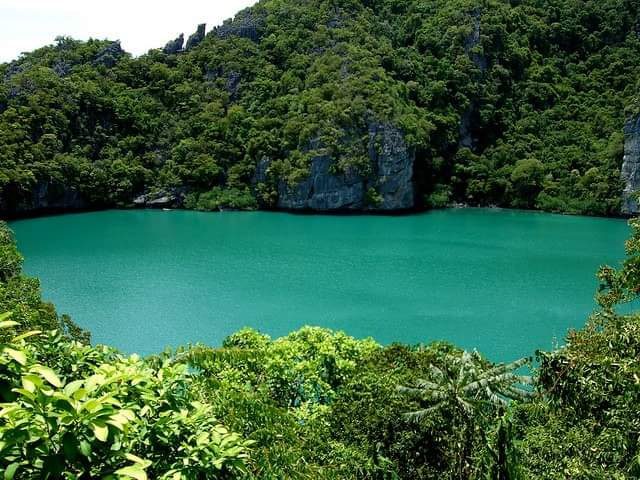
14. Kariba Lake
Created by the Kariba Dam along Zambia’s border with Zimbabwe, man-made Lake Kariba is The world’s biggest manmade lake results from the dam flooding the Kariba Gorge.
With a breadth of 25 miles (40 km) and a length of 139 miles ( 223km), Lake Kariba boasts a surface area of 2,150 square miles (5,580 sq. km). The average depth is 95 feet (29 m); the highest depth is 318 feet (97 m). Based on volume, the water volume comes to be 43 cubic miles (180 cubic km), the biggest manmade lake in the world.
Lake Kariba is located at a height above the sea level of 1,591 feet (or 485 meters). As such, fishing, boating and other outdoor activities can be enjoyed in the surroundings since it is also home to several species of fish that are taken there from Lake Tanganyika making this place famous among visitors who come to marvel at these creatures.
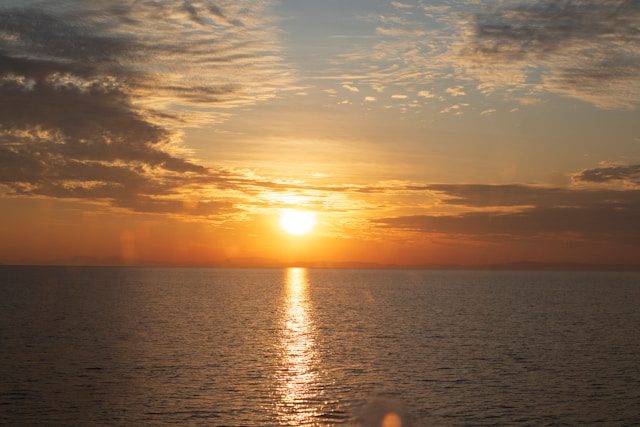
Fun Activities And Festivals to Join In Zambia
1. See the Biggest Bat Migration in Africa
Botswana boasts a zebra migration; Tanzania and Kenya have the Great Wildebeest Migration; Zambia hosts the biggest bat migration of the continent. About 8 million straw-colored fruit bats migrate from the Congo between October and December each year in quest of the wild Masuku fruits found in Kasanka National Park.
Apart from being the biggest natural occurrence in Africa, this is the biggest animal migration worldwide. Few people have had the honour of personally witnessing the yearly Kasanka bat migration, which is a best-kept secret of the natural world.
Kasanka National Park is surrounded by about ten million straw-coloured bats, which fly in the sky from October through December every year. It is indeed correct that the largest animal migration on earth does not happen in the wildebeest-rich East Africa!
While the number of bats alone is mind-boggling, its most fascinating part is that: Huge birds of prey hover above the breathtaking sky and eat bats as their morning meal.
Of course, the typical Kasanka specials—rare, swamp-dwelling sitatunga antelope graze—show up in the misty dambos (wetlands) in the morning. If you really enjoy safaris, this is absolutely must-do experience.
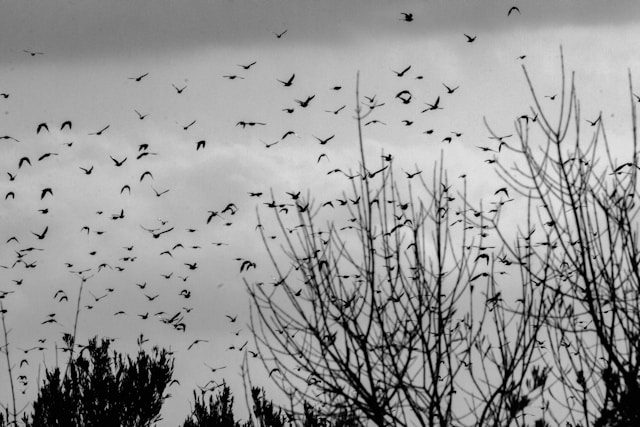
2. The umutomboko
The Lunda and Lubapeople meet together each July to commemorate their arrival from the Congo. To bring the sun and moon, Chief Mwata Yamva reportedly gave his people instructions to construct a structure reaching the heavens.
Many were killed during the several building attempts that the tower collapsed under. Many families fled out of terror as a result. They crossed the river then and subjugated every tribe they came across. They celebrated Umutomboko every time they passed a tribe.
The event today is two-day celebration with speeches and a ritual performance with pounding drums. Before being returned to the palace, food and beer are provided to the chief who then honours his ancestors.
Following a goat slaughter, a Mutomboko dance opens the second day. The chief then shows that nobody in any direction can subjugate him by pointing his sword in all directions.
3. Likumbi Ley Mize Festival
Every August in Zambia, Mize is a famous festival that is celebrated. This is organized at the main Masitu palace (the Mize), Senior Chief Ndungu’s home, for Luvale tribe. Boys who are eight to twelve years old engage in Makishi masquerades in which they are taught some life-related issues.
This four-day event which begins on the last Wednesday of August transverses across both sides of the Zambezi River. Masked Makishi dancers and performers recreate mythological events while market booths offering baskets, fabrics, metals and carvings queue.
Visitors are welcome to participate in several events and there is non-stop entertainment culminating in a royal Makishi procession for the chief.
4. Kuomboka Festival
Perhaps the most well-known and largest traditional celebration of Zambia is Kuomboka Festival, which stands to “get out of the water”. The celebration of the Lozi people of Western Zambia consists in the King, known as the “Litunga,” and his wife travelling from their summer residence at Lealui in the Barotse floodplain, one of Zambia’s largest wetlands, some ten km distant.
They pass across two distinct barges across water, each of which is traditionally dressed by paddlers. The king’s black and white painted boat, Nalikwanda, is larger than both; it is usually handled by expert tribesmen and bears a small elephant figure at the top. Clad in Siziba and Musinsi (their own traditional outfits), his own subjects as well as guests would line up along the Zambezi riverbanks waiting for him for six hours before he arrived.
Usually in April, this occurs right around the time the rivers are flooded or full. The custom is that the remainder of the Lozi people will follow only after the monarch ascended higher terrain. The Lozi people return to the lower plains around June or July as the river withdraws.
Fascinatingly, the only king in Zambia is the Lozi king ruling over Barotseland. Other leaders are chiefs, or paramount chiefs.
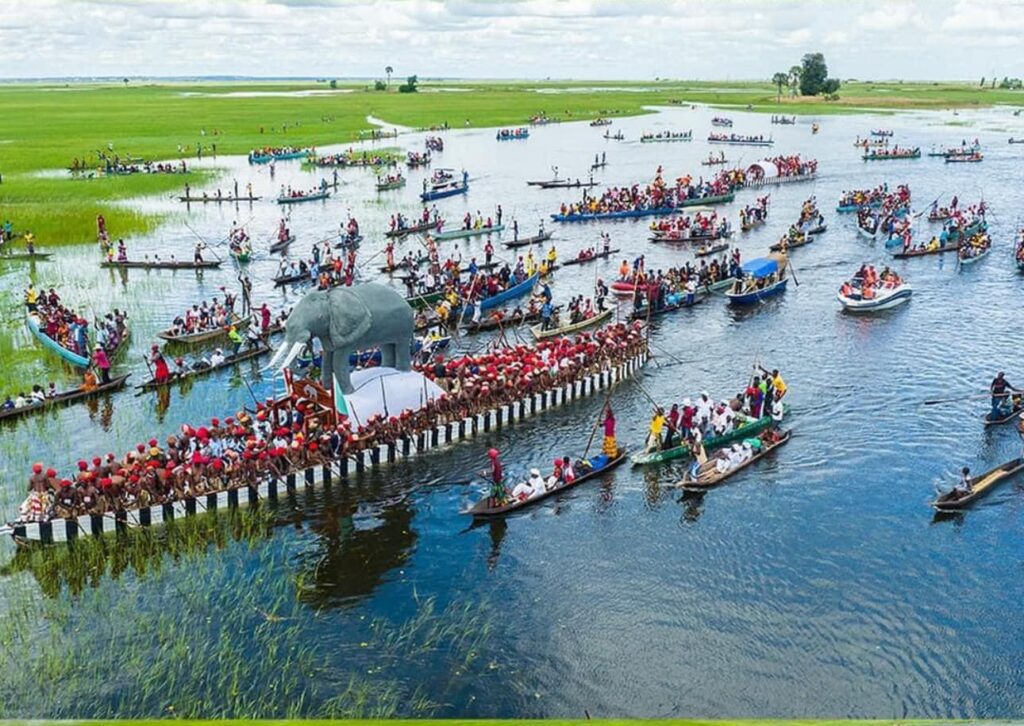
5. Likumbi lya mize ceremony
Celebrated by the Luvale people of North Western Province, the custom In history. The celebration is to honour the return of boys between the ages of eight and twelve who had been in seclusion for the length of a six-month initiation ceremony into manhood, learning survival skills, hunting, understanding women, becoming a good spouse and father, and ending with circumcision.
The four-day ritual consists in dances by the “Makishi,” masked men thought to be spirits standing in for ancestors. After more than one hundred Makishi “resurrect” from the graves, they head to a dancing stadium to perform. The lads are also held at the graveyard, where they leave their symbolic dead as children upon subsequent collection.
UNESCO awards Likumbi Lya Mize a Masterpiece of the Oral and Intangible Heritage of Humanity.
Ceremony dates fall between August and September 2024, hence you could visit the Likumbi Lya Mize festival with Ntanda Ventures during those times.
Great to mix with one of the Best National Parks, Kafue National Park, and the spectacular Busanga Plain or Guided Self Drive Safari across Zambezi River across Zambia.
6. N’cwala rites
Celebrated by the Eastern Province’s Ngoni people at Mtenguleni village in Chipata, this harvest event marks Blessed by the Paramount Chief Mpezeni, the first crops of the season come Then Ngoni warriors bring a black bull for sacrifice; some of its blood is drained and presented to the chief as a sign for the people to begin savouring the crops of their fields.
Dancing follows and fake battles between the impis—warriors—reiterate the several conflicts the Ngoni battled and prevailed in their migration from South Africa to Zambia. Participants sporting leopard skins will be able to wield spears, clubs, shields, eagle plumes. February is the N’cwala ceremony month.
The event will also be attended by ngoni people and their chiefs from Malawi and Mozambique. The ritual was outlawed during colonial times and reinstated in 1980.
7. Chewa Kulamba in Mkaika
Chewa Kulamba in Mkaika, Katete area is another traditional event practised in Zambia’s eastern provinces. The Chewa people from Malawi, Mozambique and Zambia mark their primary Chief and celebrate Chewa culture using rituals and traditional dances.
Malawi has 137 Chewa chiefdoms, 33 in Mozambique, and 42 in Zambia. Every last Saturday of the month is the ceremonial day. One can view a three-hour live feed of the 2022 Kulamba to get a feel of Chewa Kulamba.
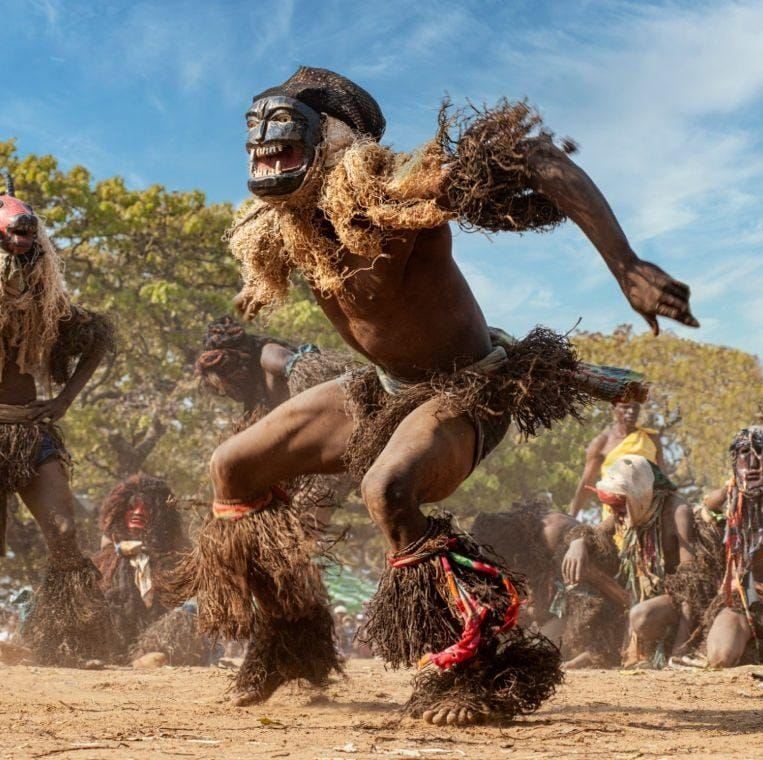
8. The Ukusefya Pa Ngwena ceremony
The Bemba people celebrate this customistically in Mungwi district, northern province. The matriarchal Bemba are the most prevalent group in northeastern Zambia, sometimes referred to as ‘forest people’.
The Ukusefya Pa Ngwena ceremony recreates the Bemba tribe’s journey from Kola, modern-day Angola to their present settlement. The chief titled “Chitimukulu” is escorted from his palace on a couch with a paper mache crocodile on the front.
For the Bemba tribe, the crocodile is a significant totem as, according to mythology, they arrived at a place with a dead crocodile during migration into Zambia and considered it as a good omen and thus stayed there.
Ukusefya Pa Ngwenga has dance, drumming, singing, and traditional food and drink consumption, much as other ancient celebrations and it’s one of the fun things to do in Zambia. August will be the ceremonial month.
9. The Mutomboko Celebration
The Lunda people of the Mwata Kazembe kingdom in the Luapula province of Northern Zambia celebrates this event. Arrival day in Mwansabombwe village marks the beginning of this last week of July. It began as a dancing and beer drinking function after war with outsiders.
The event officially became an annual celebration of Lunda heritage in 1971. There is millet beer and young people plan cultural activities and sports.
Highlight is the Mutomboko battle dance carried out by King Chief Mwata Kazembe in his traditional attire at the culmination of two days of ancestor-honoring dancing and singing. The dancing represents the Luba-Lunda migration and first chief conquest of the Luapula Valley.
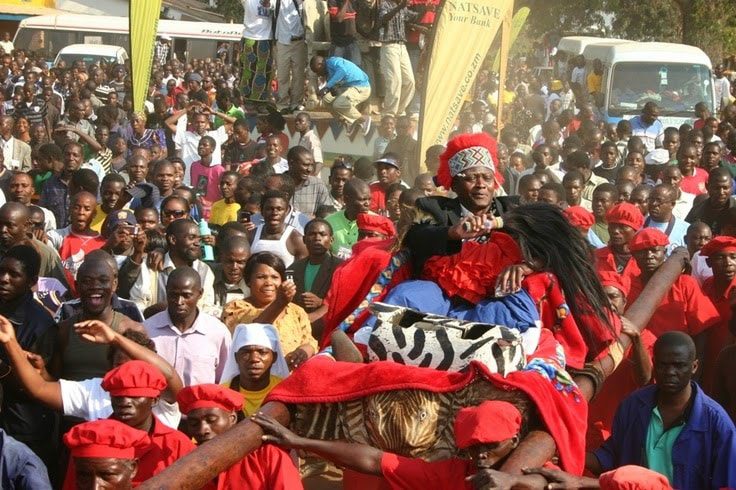
10. The Shiminenga Festival
The name of the custom observed by the Ila people of Namwala, Southern Province honours the warrior Shimunenga who guided the tribe and their cattle to the Kafue flats following a conflict with his brother. One day of the three-day celebration is set aside for the women to sing and execute traditional dances including “kukonkobela”.
To represent spear thrown at Shimunenga’s brother, the women toss sticks at the males on the second day. A cattle drive day with cows vying to cross a portion of the Kafue River marks the third day. August is Shimunenga’s month of celebration.
11. Visit Chipata
When you arrive at this small village near the Malawer border, you will come across the most important thing that attracts people to Chipata. The town itself is a regular stopover for travelers on overland trips to the south and best spot to take a picture is under the lively welcome arch. A tour around this place reveals an intriguing aspect of Zambian customs.
12. Camping At Chiawa
Perfectly located on the banks of the Zambezi, Chiawa Camp Book a sleep out on the star bed deck. Spot elephants, water monitors and vervet monkeys on riverside, sometimes they come and say hello to you.
Experience Big 5 game viewing at Chiawa Camp without leaving the comfort of the camp. dinners under the stars in open air. Boat-based safaris are the greatest method to see the Zambezi; enjoy exciting walking safaris.
13. Experience the Walking Safari
A single way you could really get deep into this untouched countryside is by taking guided hikes around here. After a little while, you would see various paths that animals use when moving along sandy river beds.
Know what types of vegetation can be eaten or drunk from; as well as be amazed by the level of information that is available from this constant dropping off places for animals.
In South Luangwa especially, one of the top places in Africa for viewing big game while walking, you might still manage to locate the thrill in seeing a lion there.
But it is not certain anyone must see one because safari is not something people do to tick off a list! Overnight stay takes place in snug tents provided with all the necessary camp gear for you by experienced personnel.
Midway into South Luangwa, stay in the best accommodation away from any other person, car or evidence of civilization. Do not let the name “bush camp” discourage you; at night, beddings of high-quality fabric, hot running water for your bath, tasty but simple dishes and cold beverages will be provided by the campfire beneath a dome of stars above.
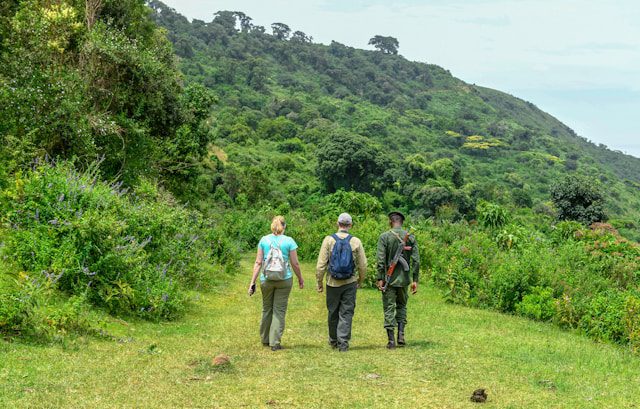
Frequently Asked Questions
1. Is the Victoria Falls a 7 Wonder of the World?
Although it is not officially listed as one of the 7 wonders of the world, however Victoria Falls has been accredited as one of the Seven Natural Wonders of the world.
2. Is Victoria Falls in Zimbabwe or Zambia?
A portion of the Zambezi River, which divides Zimbabwe and Zambia, includes Victoria Falls. The waterfall may be readily reached from either Zimbabwe’s Victoria Falls Town or Zambia’s Livingstone, as it spans both countries.
3. What is Zambia Best known For?
Walking safaris are something Zambia is well-known for pioneering. Some claim Zambia is the greatest kept secret in Africa, a hidden gem for all kinds of safari and game viewing. It is a raw slice of Africa, full with many unspoiled wild areas deserving of any pioneer!
4. What Do I Need to Know Before Travelling to Zambia?
Zambia does not allow entry without a passport. A valid passport with at least three blank pages is required for each entrance and must be valid for six months upon arrival.
5. For What Primary Reasons do Zambian Cultural Events Take Place?
Zambian cultural functions highlight the rich diversity of ethnicity in the region thus nurturing community ties, upholding tradition, enlightening the residents and visitors concerning customs as well as history. Maintaining cultural identities and giving a forum for expressions of community and spirituality depend on these celebrations.
6. How Might Visitors Engage in These Celebrations?
Visitors are welcome to take part by going to the celebrations, where they may see ceremonies, savour regional cuisine and handicaps, and experience traditional music and dance. Many celebrations also include guided trips or seminars to assist visitors in appreciating the cultural value of the events they observe.
7. What is The importance of the Kuomboka Festival
The Kuomboka Festival is the Lozi tribe’s way of interacting with nature and at the same time benefiting from the movement that occurs at each season as a result of the floods of the Zambezi River. It is a great shared experience honouring resilience and unity and shows a regal barge procession.
8. What is The N’cwala Festival All About?
Celebrated among the Ngoni people, the N’cwala Festival is a Thanksgiving celebration of the first fruits of the crop. It pays respect to ancestral spirits and helps to strengthen social relationships inside the society by include presentations of ancient dances.
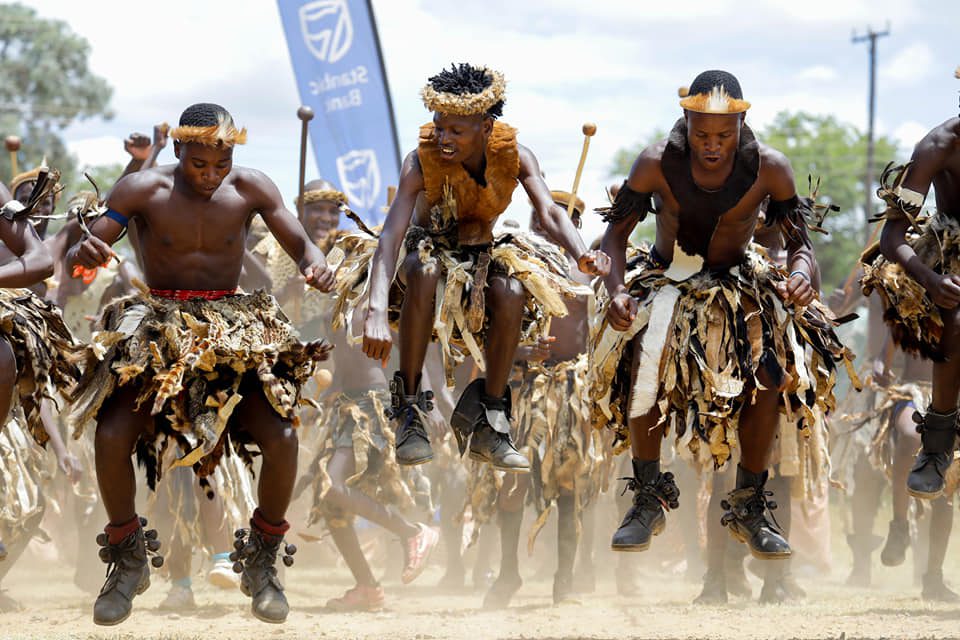
Final Words
At a significantly lower cost than visits to other African nations, Zambia presents a real safari experience and breathtaking scenery. There is enough to see and do for those who enjoy nature, adventure, cultural vultures and animals.
From the beaches, rural and urban attractions to first-rate game watching in the many national parks and private reserves, Zambia is a nation of enormous variety, adventure and beauty. It is also a friendly venue covered in interesting history and culture.

